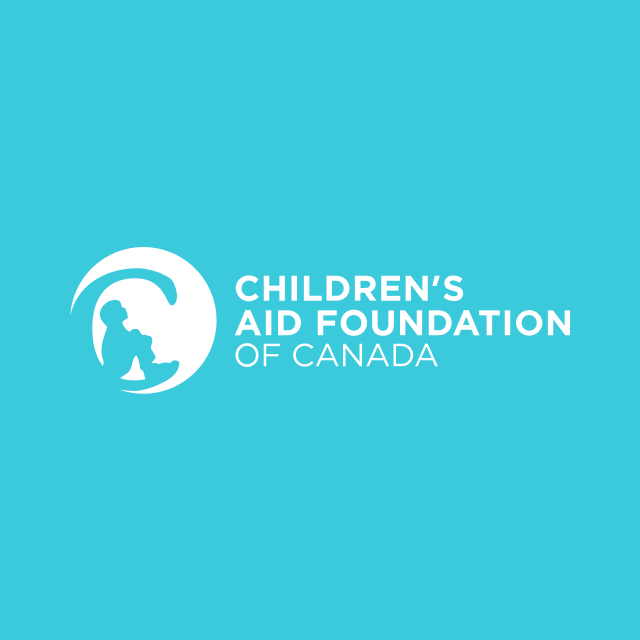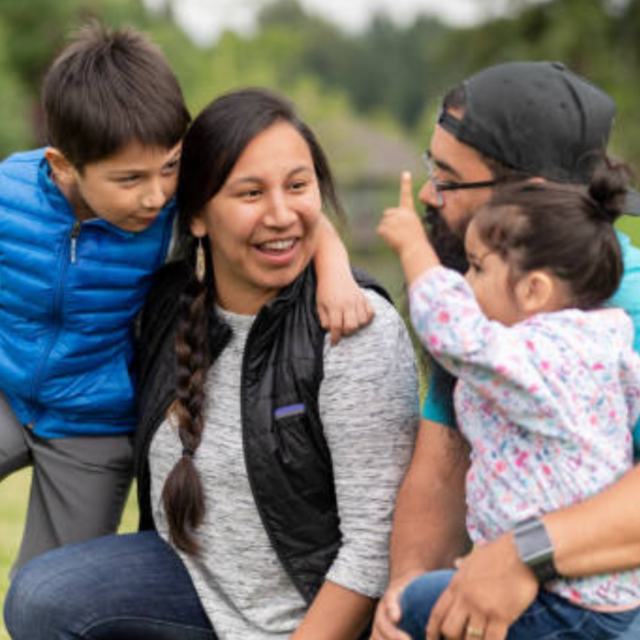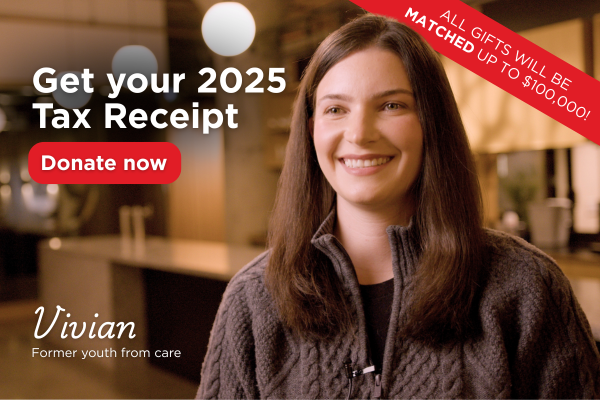If you’re interested in expanding your family, you may want to consider the life-changing opportunity to foster or adopt a child currently living in government care in Canada.
In this article, we share a look at what it means to adopt or foster a child in the context of the child welfare system, how Children’s Aid Foundation of Canada is supporting adoption and fostering, and where to find more information about adopting or fostering in your province or territory.
The need for foster and adoptive families is great
Right now, approximately 59,000 children across Canada are living in government care – meaning they’ve been removed from their family homes due to abuse, neglect, or abandonment and placed in the care of their local child welfare agency. Child welfare agencies are provincially regulated organizations mandated to protect the rights and well-being of children in their local communities.
Children living in government care are typically placed in a kinship arrangement with extended family members, with a foster family, or in an institutional setting like a group home.
Of the 59,000 children currently in care, 30,000 are eligible for permanent adoption by loving families – yet only 2,000 children are adopted each year.
Meanwhile, an additional 300,000 children and youth nationwide are at risk of entering care due to unstable family situations. For these children, it’s critical that loving foster families are available to provide a caring, stable home environment during a time of tremendous upheaval.
By choosing to foster or adopt a child involved with the child welfare system, you can play a crucial role in helping that child experience the lifelong benefits of a safe, loving home and family, overcome their past traumas, and build the strength and resilience they need to thrive.
Fostering a child living in government care
Child welfare agencies have a duty to ensure the safety and well-being of children in the communities where they operate. If a child is experiencing abuse, neglect, or abandonment, their local child welfare agency has the right to remove them from their home and place them in government care.
In some cases, biological parents who believe they are unable to properly care for a child may voluntarily place them in the care of their local child welfare agency and surrender their parental rights.
While child welfare agencies do everything they can to match children with extended family members and work toward family reunification, in many cases they must rely on the generosity and compassion of families in the community to provide temporary foster care for children who have been removed from their homes.
When you provide foster care for a child, they may live with you and your family for just a couple of days or for a number or months or years. This depends largely on whether they are in temporary or permanent government care, whether they are eligible for adoption, and other factors.
Foster families commit to providing a safe and loving home environment where the children in their care can thrive. They receive funding support from their local child welfare agency to help cover the costs of caring for the child they are fostering, and additional support for specific needs is available through charitable organizations like Children’s Aid Foundation of Canada.
Fostering a child can be a wonderful way to create long-lasting impact for a young person experiencing the trauma of abuse and neglect by providing the care, comfort, and support they need to move forward with confidence.
Adopting a child from a child welfare agency
When a family adopts a child, the child moves permanently into the care of their new family. This means that all parental rights are transferred to the adoptive parents, and that the adopted child has access to all the same legal, social, and emotional benefits as biological children.
Children can be adopted through several different pathways, including private agencies, approved adoption practitioners or lawyers, or public child welfare agencies. Children’s Aid Foundation of Canada works specifically with public child welfare agencies.
Children who are eligible for adoption through child welfare agencies are in permanent government care. They are typically living with a foster family or in an institutional setting like a group home.
While the adoption process may differ slightly depending on your province or territory, in general all prospective adoptive parents are assessed by their local child welfare agency for suitability, stability, and other factors.
Following approval, a child will be matched with the family and placed in the home for a probationary period.
Finally, if the child and the prospective adoptive parents wish to move ahead with adoption, a formal adoption order will be granted by the court.
Children eligible for adoption through public child welfare agencies are typically between the ages of zero and 17, but laws and policies differ between provinces and territories. Be sure to check adoption information for your specific province or territory using the links at the end of this article.
What Children’s Aid Foundation of Canada is doing to help
At Children’s Aid Foundation of Canada, we believe every child deserves to live in a safe and loving home.
For children living in government care, we provide much-needed support through a wide variety of programs delivered in partnership with our Canada-wide network of child welfare agency partners.
With government funding only covering the basic needs of kids in care, we strive to create access to the wraparound supports, services, and experiences that young people need to truly thrive – including enrichment activities like sports and camp, science kits, school supplies, and much more.
Through the Ted and Loretta Rogers Foster Care Comfort Kit Program, we also help to improve the experiences of kids entering care by providing them with a backpack filled with age-appropriate items and supplies – offering much-needed comfort and dignity during one of the most overwhelming experiences of their lives.
And as leading adoption advocates, we are proud to support the Ignite the Spark Fund. The Fund allows children to enroll in any enrichment program of their choice within their own communities and provides a commitment over multiple years. It also covers the costs of related clothing and equipment and gives them a level playing field with their peers. The IGNITE THE SPARK FUND not only supports children and youth involved with child welfare organizations in Toronto, (such as: Jewish Family and Child Service; Native Child and Family Services of Toronto; and Catholic Children’s Aid Society of Toronto) it also supports children under the watch of child welfare services across Canada.
If you’re not sure you’re ready to consider becoming a foster or adoptive parent but would like to support the needs of kids involved with the child welfare system, please consider making a special donation to help Children’s Aid Foundation of Canada continue offering children, youth, and families access to the resources they need to thrive.
Getting started as an adoptive or foster parent in your province or territory
Learn about fostering
For information about how to become a foster parent in Canada, please visit:
Nationwide
Canadian Foster Family Association
Alberta
Alberta Children’s Services
British Columbia
BC Federation of Foster Parent Associations
Federation of Aboriginal Foster Parents
Manitoba
The Kinship and Foster Family Network of Manitoba
New Brunswick
New Brunswick Foster Families Association
Newfoundland and Labrador
Newfoundland and Labrador Foster Families Association
Northwest Territories
Foster Family Coalition of Northwest Territories
Nova Scotia
Federation of Foster Families of Nova Scotia
Nunavut
Government Department of Family Services
Ontario
Ontario Association of Children’s Aid Societies
Foster Parents Society of Ontario
Ontario Government – Become a Foster Parent
Prince Edward Island
Government Family and Human Services
Québec
Fédération des familles d’accueil et ressources intermédiaires du Québec
Saskatchewan
Saskatchewan Foster Families Association (SFFA)
Yukon
Yukon Health and Social Services
Learn about adoption
For information about how to adopt in Canada, please visit:
Nationwide
Adoption Council of Canada
Dave Thomas Foundation for Adoption
North American Council on Adoptable Children (NACAC)
Alberta
Alberta Adoption Services
British Columbia
The Belonging Network
Manitoba
Government of Manitoba
New Brunswick
New Brunswick Department of Social Development
Newfoundland and Labrador
Newfoundland and Labrador Department of Children, Seniors and Social Development
Northwest Territories
Northwest Territories Department of Health and Social Services
Nova Scotia
Nova Scotia Department of Community Services
Nunavut
Nunavut Department of Children and Family Services
Ontario
AdoptOntario
Learn more about adopting young people who have aged out of care (Never Too Late)
Prince Edward Island
Prince Edward Island Department of Family and Human Services
Québec
Government of Québec (French)
Government of Québec (English)
Saskatchewan
Adoption Support Centre of Saskatchewan


